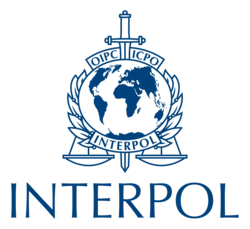CEBU CITY, Philippines – Ten families of victims of the Philippines ferry disaster claimed their bodies at a ceremony on Sunday following the release of the first DNA identifications. The event was attended by local officials and by members of INTERPOL’s Incident Response Team (IRT) and the International Commission on Missing Persons (ICMP) undertaking the forensic work.
The INTERPOL team, which includes Disaster Victim Identification (DVI) experts and a representative from the ICMP, has been working with Philippines authorities to identify the bodies of some 800 people drowned when the Princess of the Stars ferry capsized in a typhoon on 21 June.
More than 300 bodies were initially recovered from the sea after the typhoon and 40 of these have so far been identified using fingerprints, dental records and other traditional methods excluding DNA. At least several hundred more bodies are still trapped in the capsized ferry and a complex salvage operation is underway to refloat the vessel.
The ten bodies released on 17 August were the first to be identified using the latest DNA technology. Many more such identifications will be made in the weeks ahead as DNA matches are made at the ICMP laboratory in Sarajevo, Bosnia.
So far, 1,663 DNA samples from relatives of the victims and 312 DNA samples from victims’ bodies have been shipped by INTERPOL from its IRT headquarters in Cebu City to Sarajevo for analysis by specialists at the ICMP, which has extensive expertise in large-scale victim identification. INTERPOL teams have assisted previously in co-ordinating major forensic identification of victims of disasters such as the 2004 Asian tsunami that killed many thousands of people.
“This is a very important day in the DVI process in the Philippines, but in the days and weeks ahead there is still a lot of complex forensic identification work to be done,” said INTERPOL Secretary General Ronald K. Noble, who travelled to the Philippines to attend the event and requiem Mass marking the first DNA matches. “When we began our work here a month ago, I promised that we had only one goal – to ensure the accurate and dignified identification of those who perished – and that will remain our goal until the work here is done.”
ICMP Director General Kathryne Bomberger, who also travelled to Cebu City, said: “DNA matching is the most advanced methodology for identifying missing persons. We at the ICMP were honoured to be able to use our sophisticated equipment and the experience of our personnel to help ensure that victims of the typhoon disaster are identified as accurately and quickly as humanly possible.”
INTERPOL’s IRT arrived in Cebu on 29 June at the Philippines government’s request. Since then the team has overseen major forensic and logistical efforts, including the installation of refrigerated containers at the recovery site where additional remains can be properly stored during the identification process once they have been recovered from the ferry. INTERPOL has also shipped a mobile forensic laboratory to Cebu City for post mortem examinations.
“Our DVI team has made identification of the Typhoon Frank victims our first priority, and so we are extremely thankful to INTERPOL for its contribution to the speedy identification of victims through DNA sampling and also through providing a sophisticated mobile forensic laboratory and other crucial support,” said Dr Renato Bautista, the Philippines National Bureau of Investigation’s DVI Commander.
ICMP endeavours to secure the co-operation of governments and other authorities in locating and identifying persons missing as a result of armed conflicts, other hostilities or violations of human rights and to assist them in doing so. ICMP also actively supports the work of other organizations in their efforts to identify missing persons.
In the event of a terrorist act, natural disaster or other crisis situation, INTERPOL member countries can request the assistance of an INTERPOL IRT, which can be briefed, equipped and deployed anywhere in the world within 12 to 24 hours of a major incident.



